HIMI TENMASEN
-
In 2019 I was able to organize an apprenticeship with Mr. Mitsuaki Bansho. The project was part of a larger research project that included studying with a second boatbuilding (see the HONRYOUSEN page under Japanese Boats). This research was a partnership with The Apprenticeshop in Rockland, Maine and Ms. Nina Noah, a former apprentice and staff person, came with me. We were also joined by Benjamin Meader, a videographer. With grant funding from the Traditional Small Craft Association in the US and the Niigata Arts Council in Japan, and crowdfunding, we were able to build a tenmasen in Himi, Toyama, documenting the entire process. We also took the lines (measured) several fishing boats in the region.
I wrote an article for the Traditional Small Craft Association, one of our sponsors, about the project. Read it here.
The Apprenticeshop published our updates and videos here.
-
Tenmasen is an all-purpose name for a workboat in Japan. In Himi, these small, very heavily-built boats were used mainly to tend long nets fishermen unloaded from barge-like craft. Bansho san had apprenticed with his stepfather and later learned how to build fiberglass boats. In retirement he was asked to build wooden boats again for the local museum, parks, and a non-profit.
-
One reason I wanted to study with Bansho san was to learn how to make the curious boxed bow of these boats. This style is seen around several regions of Japan. It allows the builder to hang garboard planks flat, avoiding the extreme twist required in most boats. Our boat was like a little ship, with huge sawn frames and a heavy gunwale for such a small boat.
Tenmasen, Himi, Toyama Prefecture.
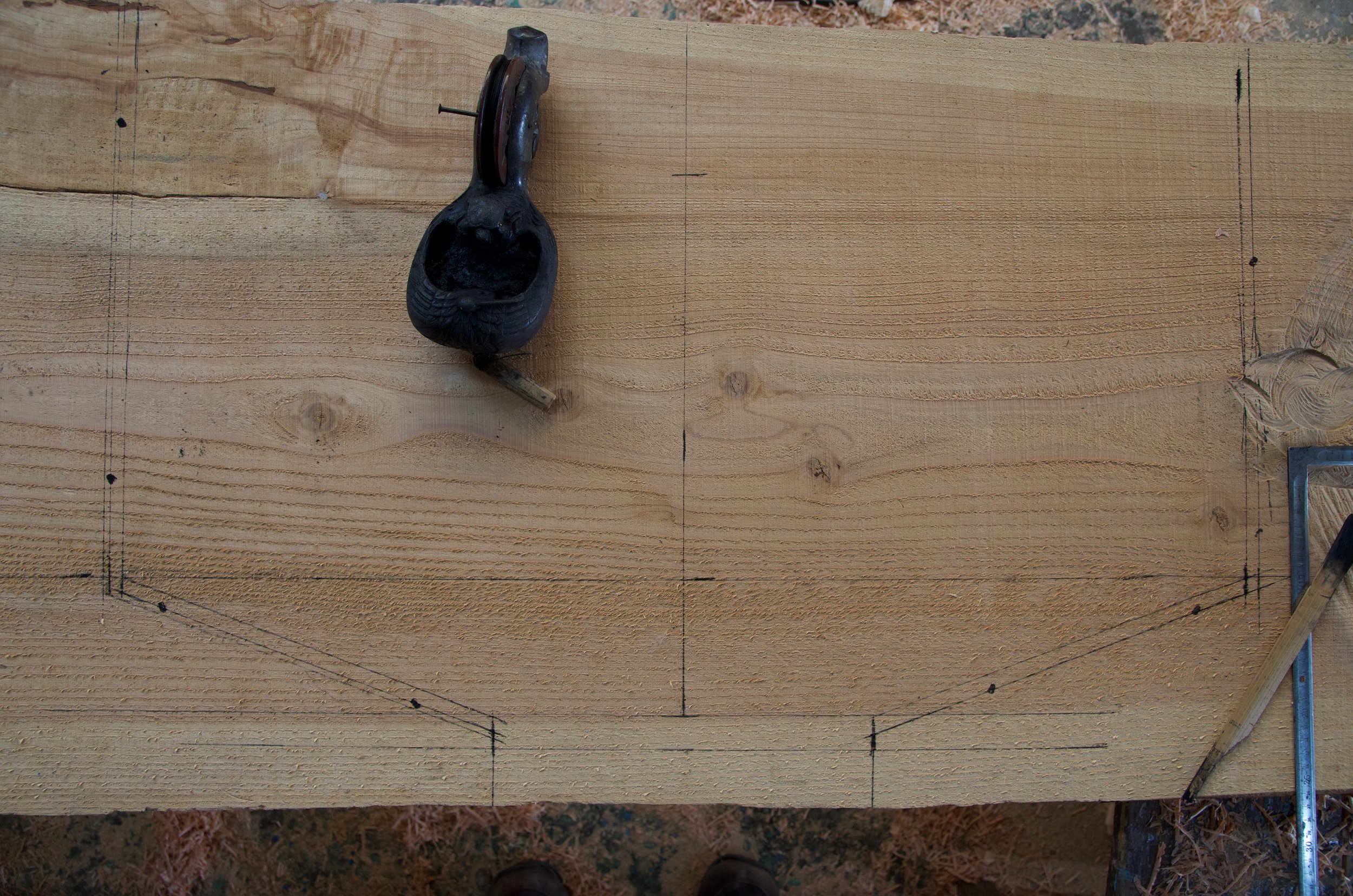
Layout of the transom.
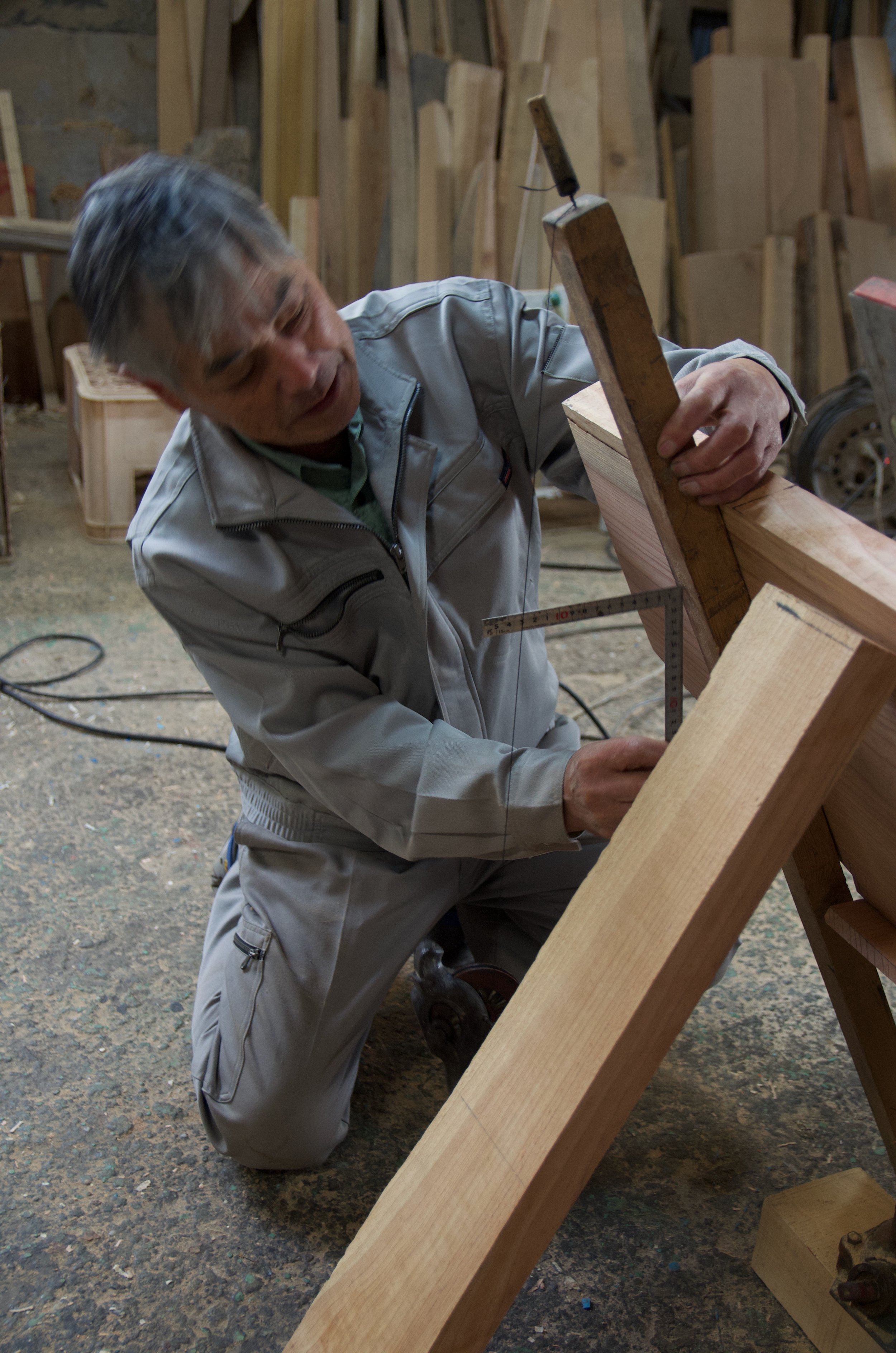
Bansho san sets the angle of the transom measuring from a known mark to a plumb line.
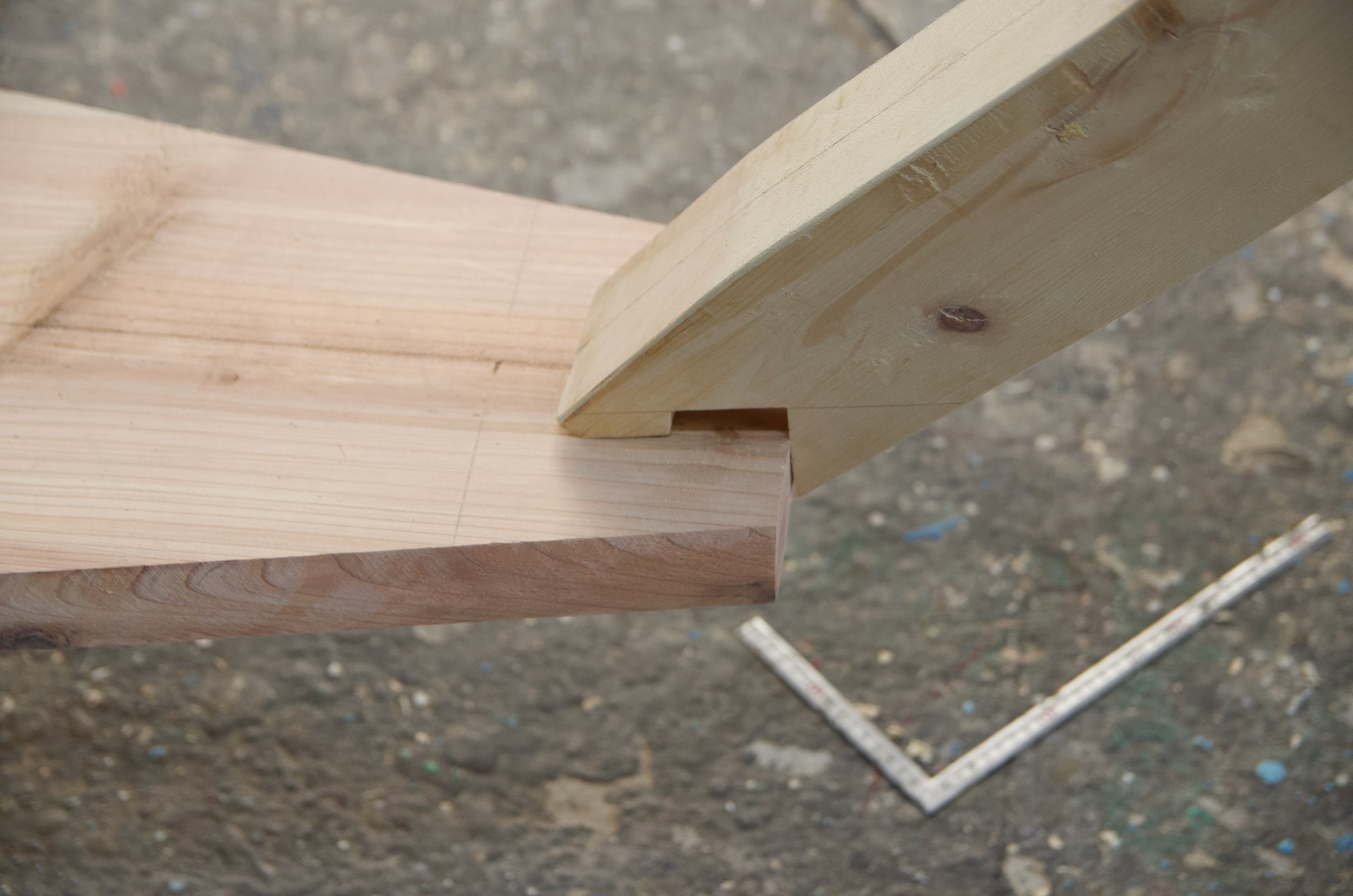
Detail of the scarf joint at the stem. A mortise cut in the keel receives the tenon on the stem.
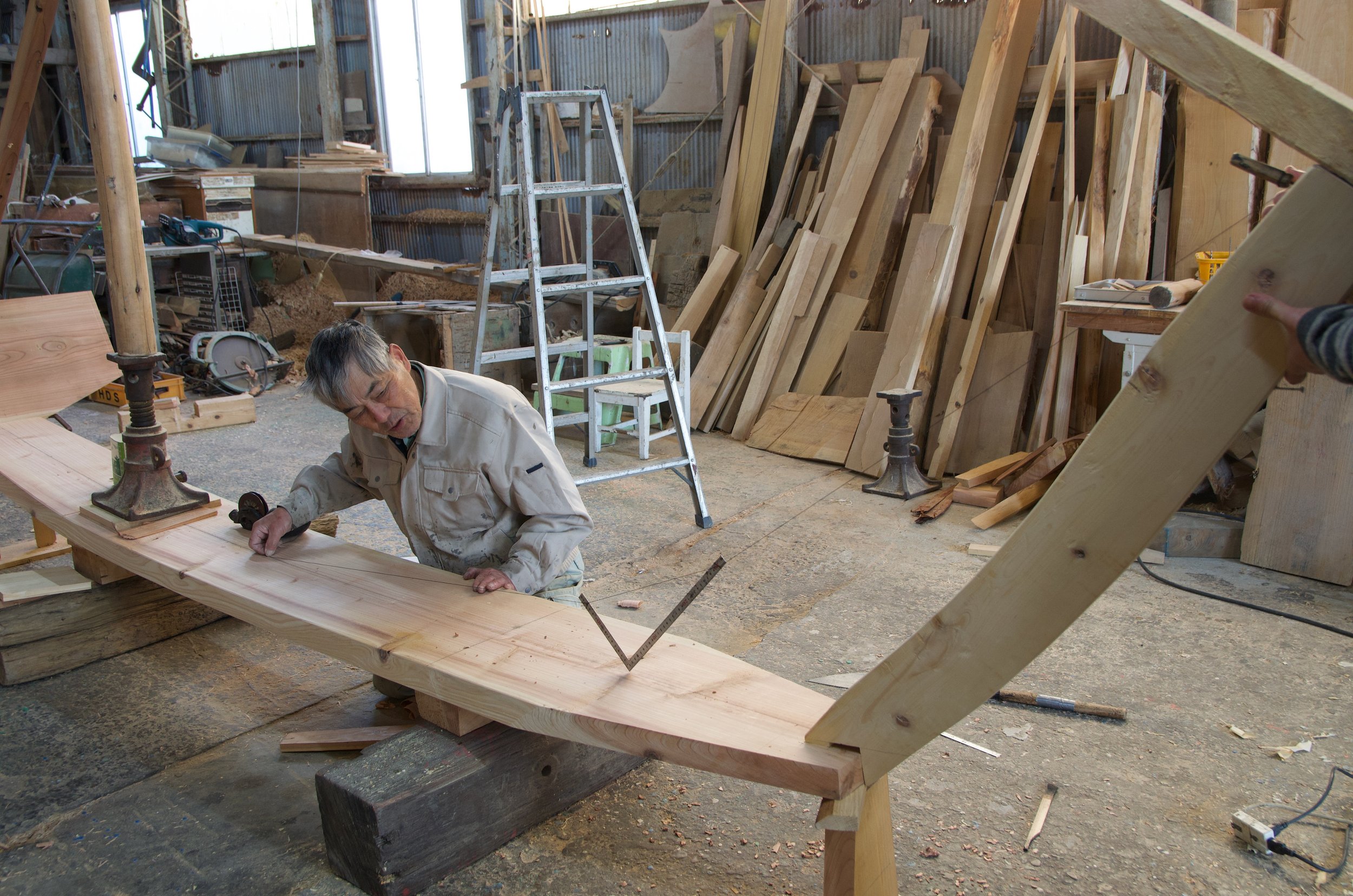
Bansho san aligns the stem with a centerline by hanging his square on a string.
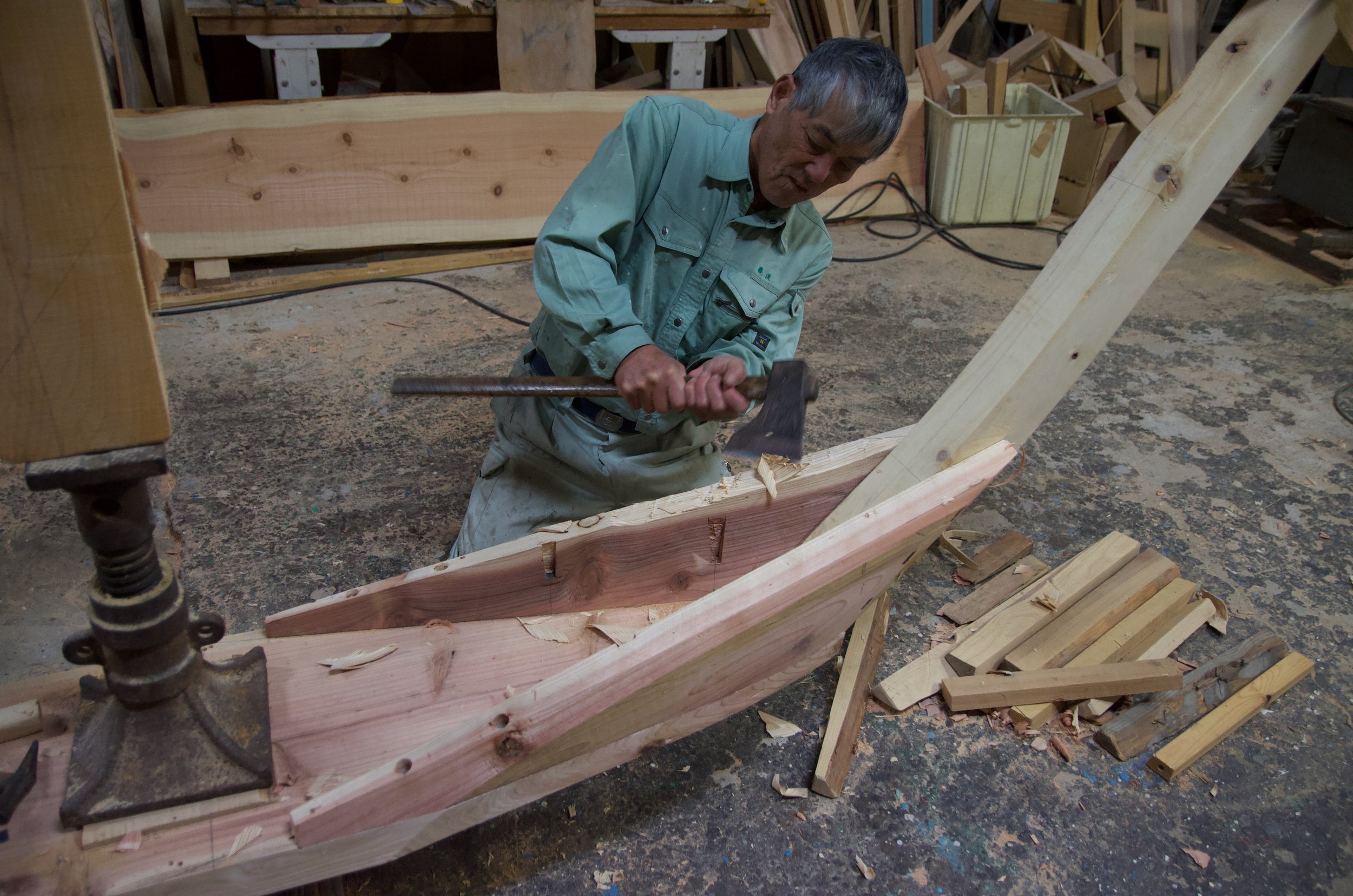
Bansho san working the strange boxed keel, a feature of small boats in this region.
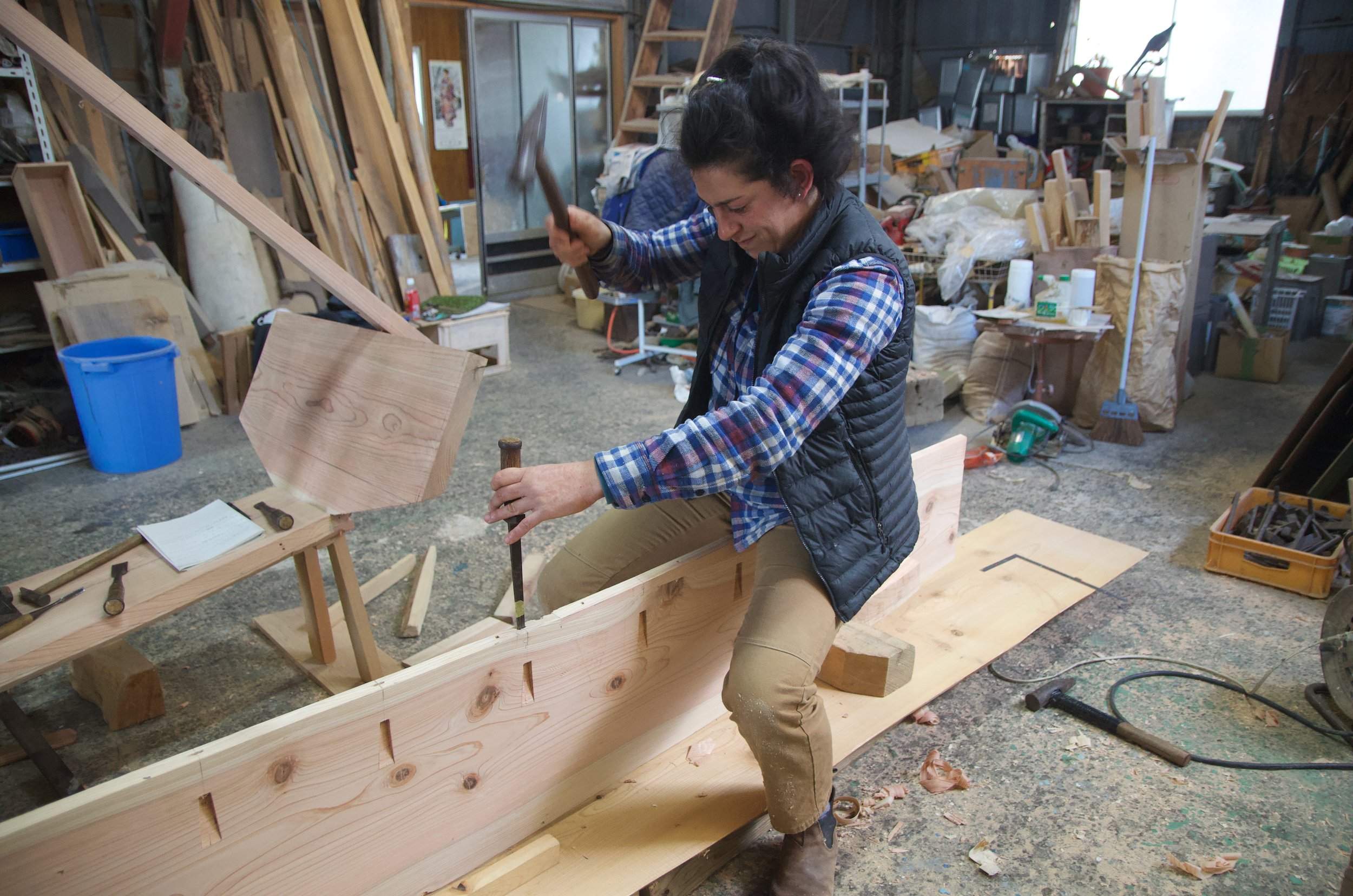
Nina Noah chisels pilot holes for our boat nails.
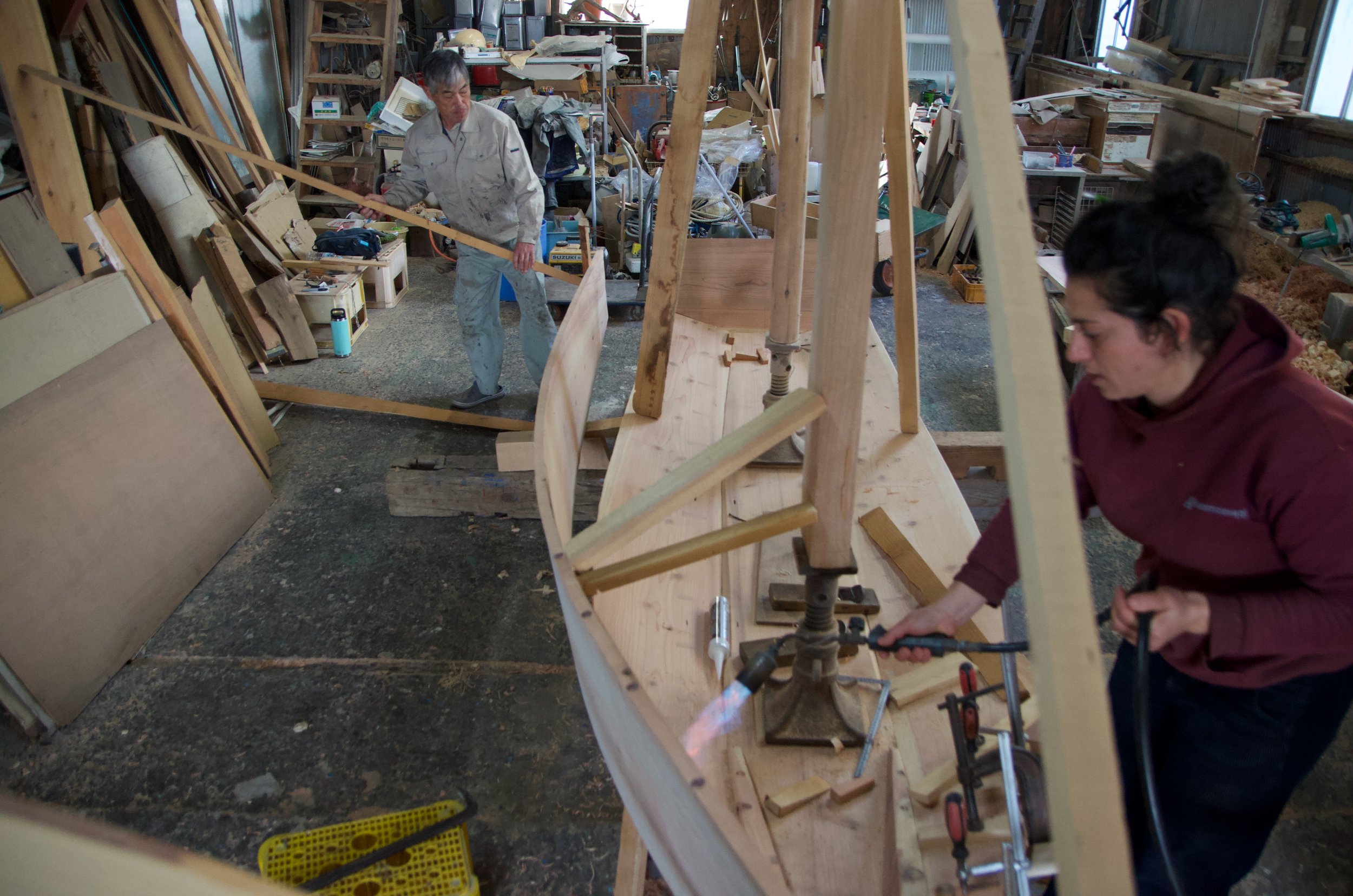
Bansho san bends in a side plank while Nina plays a flame on the inside face.

Japanese boatbuilders use props instead of clamps.

The boxed keel removes the need to twist the garboard plank to meet the stem.
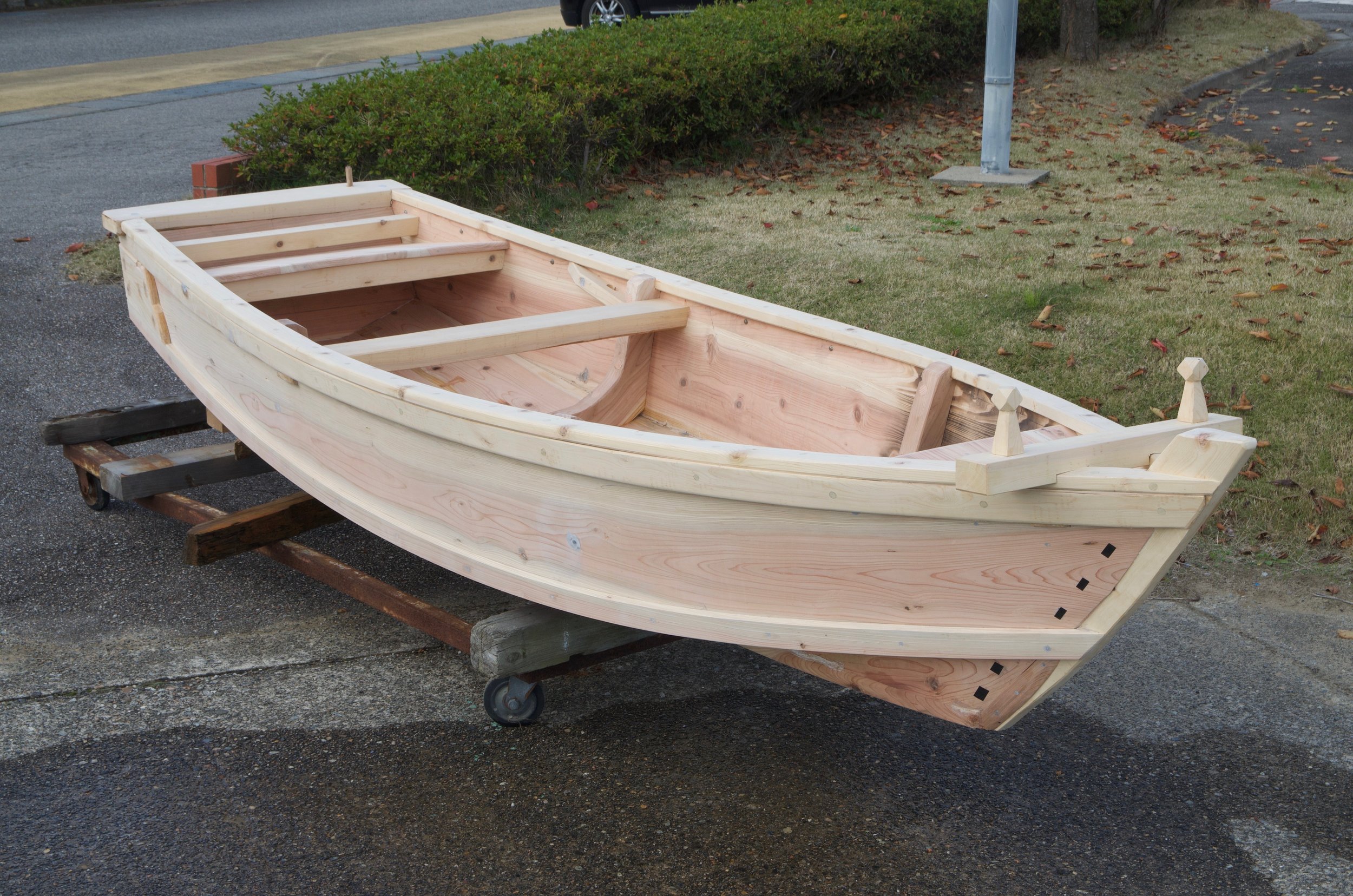
The finished tenmasen. Planking is cedar, gunwales are cypress.